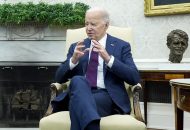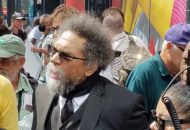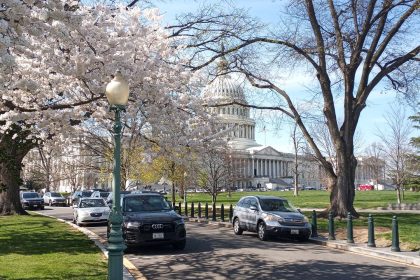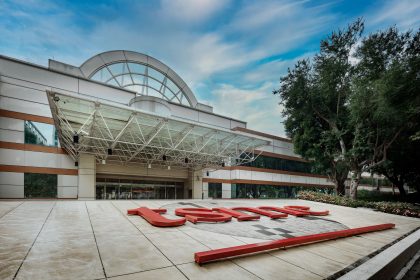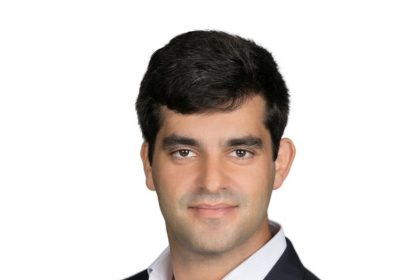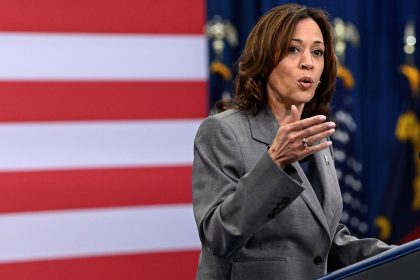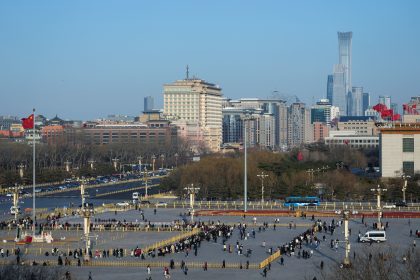Tribal Leaders: Getting Internet to All Needs Greater Coordination
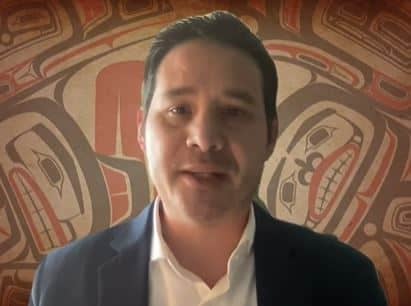
WASHINGTON — The lack of a national plan for getting internet to every native tribe in the country was on full display Wednesday as the Senate Indian Affairs Committee held a roundtable discussion with federal agencies and tribal leaders working on connecting their people to the internet.
The focus was spectrum, the airwaves that can bring 5G cell service to tribes — if the technology is deployed and they have access to it.
“We repeatedly heard from tribes that they don’t know who owns the spectrum over their lands or who to contact to get that information,” said Sally Moino, assistant director for Physical Infrastructure at the U.S. Government Accountability Office.
Moino was referring to a 2018 GAO report that laid out the lack of national coordination to help connect tribes with spectrum. Many of the recommendations made in that report have yet to be adopted as the government spends billions on internet infrastructure for tribes through the Internet for All initiative.
Utilizing spectrum will be one part of ensuring everyone can access the internet.
“The first recommendation … was really about collecting data on the extent that the tribes were trying to access spectrum without this information. [The Federal Communications Commission] doesn’t know how many tribes were trying to do so,” Moino said during questioning.
“And the second recommendation is about analyzing information to better understand the extent that unused spectrum licenses exist over tribal lands,” she added. “This could help inform the FCC’s spectrum initiatives related to the secondary market. And during our review, we heard from tribal organizations that there were a lot of unused spectrum licenses over tribal lands, so this is really a missed opportunity.”
Altogether the lack of resources creates multiple barriers for tribes looking to expand their internet services to residents.
“We were really recommending having a national strategy. If you go back to 2010, we had the National Broadband Plan that had awesome recommendations. And now it’s time, I think, for a refresh and definitely getting spectrum in there as well. It’s a big part of the solution,” Moino said.
This was especially top of mind as the FCC held its recent spectrum auction in the 2.5 GHz band. Tribal organizations had an earlier bidding window last year; however, many faced delays and had to seek waivers to ensure they could properly bid on time.
The Department of Hawaiian Home Lands was one of the tribal entities originally cut out of the spectrum auction because the FCC didn’t realize it was a covered entity, explained Tyler Iokepa Gomes, the deputy to the chairman of the Department of Hawaiian Home Lands. So, the department had to seek a waiver to participate, he said.
Sen. Brian Schatz, D-Hawaii, the committee chairman, told the FCC representative, “you need to get better at talking to and listening to native communities at every step in the process.”
Umair Javed, chief counsel to FCC Chairwoman Jessica Rosenworcel, agreed.
“The rules for the 2.5 GHz band were adopted under prior leadership, and you are absolutely right that they did not identify the Department [of Hawaiian Home Lands] as an eligible entity,” said Javed, adding that Rosenworcel saw that “as something that needed to be fixed.”
“[W]e identified and worked with the department on a waiver process to get to a good outcome there,” Javed said.
Schatz pushed back that the process can’t be reliant on “having a chair that cares.”
Javed said the commission could work to codify a process to ensure there’s more outreach. Also, there’s more of a need for coordination with agencies giving out funding to ensure 5G and other technologies can be used for internet access in the most rural areas, representatives from tribal organizations said.
Chris Cropley, the network architect for Tidal Network in Juneau, Alaska, gave the example of SpaceX’s Starlink, which is currently appealing a rejection from receiving FCC funds.
It’s those types of technologies that will be able to reach the most rural areas in Alaska, he said.
For his own company, the funding programs have ranged in accessibility.
The Commerce Department’s National Telecommunications and Information Administration’s Tribal Broadband Connectivity Program has been “exceptional,” he said. However, the Department of Agriculture’s ReConnect Program is more like “having a coupon to the helicopter store,” he said, describing the inaccessibility of meeting program requirements. “We are not necessarily in the operational position to take advantage of that.”
Overall, senators asked Javed and the FCC to make programs more accessible to the smallest tribal communities.
“It’s really important that smaller native communities, smaller tribes that can’t hire lobbyists, that can’t hire a grant writer, that don’t have the resources even to know what it would look like to find out these things — to sort of consider that your responsibility,” Schatz said.
Sen. Lisa Murkowski, R-Alaska, agreed.
“We expect you all to be able to talk your language, but it can’t just be internal to what you do,” Murkowski said. “It needs to then be translated down to those who will use this, who are trying to access, who are trying to figure out where to start.”
Madeline can be reached at [email protected] and @MadelineHughes














